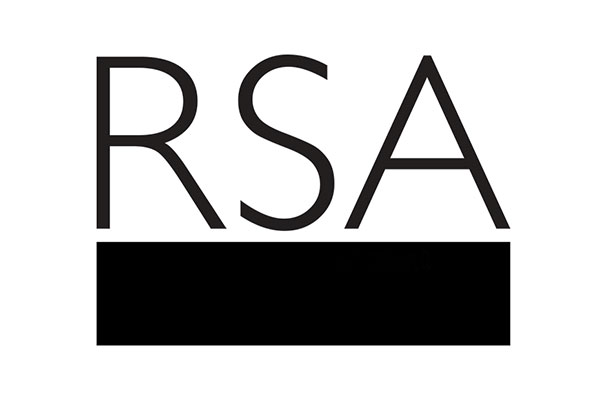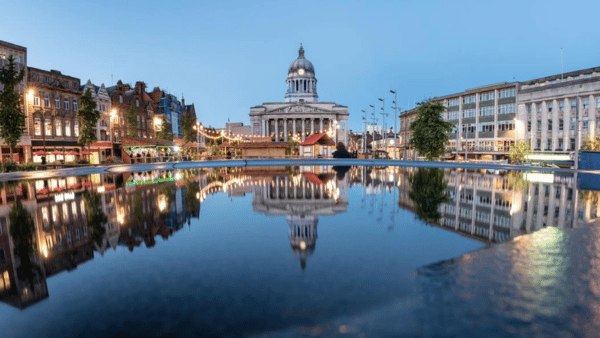Britain’s heritage is much-loved but its immense value and potential is being underused in some places, according to a new heritage index published today by the independent RSA think-tank.
Produced in collaboration with the Heritage Lottery Fund, the new index reveals for the first time which areas could make better use of their heritage assets in order to drive local identity, improve residents’ well-being and increase levels of tourism.
Set out by local authority districts in England, Scotland and Wales, the index ranks which areas enjoy the most physical heritage assets – but also measures local ‘heritage activity’ – such as museum attendance, rates of volunteering and investment in local heritage organisations.
The index shows that there are some unexpected ‘star performers’ when it comes to levels of local participation and volunteering. Whilst the City of London and Kensington & Chelsea predictably top the asset charts - it’s Scarborough, South Lakeland (in the Lake District) and Norwich that take the top three spots in terms of ‘heritage activity’.
The index also reveals which places have the most ‘heritage potential’ - with high levels of assets but lower levels of current activity. These include places such as Islington in London, Bury in Lancashire, Dudley in the Black Country, and Moray in Scotland and Newport in Wales. The index revealed:
- No Correlation between heritage scores and deprivation or prosperity: When comparing the heritage scores of all 325 English districts against the Index of Multiple Deprivation – the RSA found there to be no correlation. Several places were found to be rich in local heritage and involvement despite being relatively poor communities, including Hartlepool, Portsmouth, Burnley, Newport and Dundee, and rural areas such as Barrow-In-Furness in Cumbria and Ceredigion in West Wales. Despite facing high levels of deprivation, Blackpool (28th), Burnley (30th) and Southend (32nd) are among the top 10% of authorities across England’s 325 local authorities.
- Coastal areas are doing well: 10 of the top twenty 20 districts in the England Heritage Index have a coastline. RSA researchers found that coastal areas such as Cornwall, North Devon, Scarborough and the Lincolnshire coast have been able to capitalise on heritage assets by generating high levels of activity. In Cornwall, their efforts have meant that oysters, sardines, pasties and clotted cream have all achieved protected status, whilst Whitby has made great use of its gothic abbey by hosting horror film festivals.
- No heritage ‘divide’: A dynamic heritage scene exists equally in the cities as the countryside. While towns and cities have the densest concentrations of listed buildings and industrial history, rural areas contain an abundance of natural heritage. Similarly the north-south divide is also very narrow – with the index revealing that within each region there are pockets of strong heritage assets and activities.
- Strong impact on well-being: Comparing the RSA’s analysis with ONS statistics on well-being, in areas which scored highly for activity (rather than assets) in the Heritage Index, residents on average tended to report higher levels of well-being.
Set out for all 379 local authority districts in England, Scotland and Wales*, the index brings together over 100 data sets, with a range of indicators including nature reserves, heritage open days, archaeological groups, blue plaques, pubs that have been given protection as community assets, and even European designated local foods such as Cornish Pasties or Melton Mowbray pork pies.
The RSA and the HLF aim to use the index to challenge local communities, businesses and cultural leaders to make greater use of their heritage in order to grow their economies and improve local residents’ wellbeing.
With many areas set to make challenging decisions about where to focus their resources, and certain metropolitan areas preparing for increased devolved powers from Whitehall, the RSA and the HLF will spend the next six months examining how heritage can play a greater role in developing area’s economic, cultural and social strategies.
Commenting on the Index, Chief Executive of the RSA Matthew Taylor said:
“The UK’s heritage is much-loved but its immense value is being ignored. If leaders don’t assess heritage assets, find it hard to describe what they are and don’t know who best to talk to about them, it’s hardly surprising that their heart-felt enthusiasm for the history and identity of their places is not manifest in a convincing local heritage strategy.
The challenge for local authorities is to raise their sights from protecting history (although this is vital) to the possibility of heritage being at the heart of the conversation about a place’s future. The heritage sector too should develop an understanding of wider place challenges, and be willing to engage in hard choices about which aspects of heritage are the strongest in terms of local identity today and tomorrow. The sector must also begin to convincingly argue that what it is holding out is not a begging bowl but an untapped asset.”
Chief Executive of the Heritage Lottery Fund, Carole Souter said:
“We hope this new Index will help communities to better understand their heritage; identify its potential; and capitalise on what make their areas distinctive. We hope it will encourage debate about what heritage is and how it is best recognised and properly exploited in local plans.”
Commenting on the Heritage Index, RSA Associate Director, Jonathan Schifferes said:
“A comparison between local areas’ heritage should generate a healthy debate about how to make the most of heritage. Today we have an unprecedented amount of data available relating to heritage - but many local communities struggle to access information and put it to use. The Heritage Index helps - showing relative strengths and weaknesses across a broad definition of heritage, letting us see where strengths could be consolidated and capitalized upon; or areas where under-performance might be addressed. While we appreciate that local heritage can often difficult to quantify and record, what’s important is building public awareness about what’s valued and why - what’s missing and what should be there. The goal is a shared and richer understanding of what makes a place unique.”
Top 10 local Areas
Bottom 10 local areas
Areas with high potential; and already making the most of their assets (level of activity per asset)
What does this mean for HLF?
Building on 21 successful years of National Lottery investment in heritage and following the publication of the Heritage Index, HLF will:
- Encourage partners and other organisations to add to the Heritage Index by making available any further relevant nationally available data sets relating to heritage assets or activity. HLF will continue to build the Index for the duration of the wider research project with a view to publishing a second edition in Summer 2016
- Call on those designing heritage projects, including as part of preparing funding applications to HLF, to use the Heritage Index to understand the heritage of their place and the extent of local engagement. This will inspire better projects, and highlight different routes and opportunities for projects to be successful
- Use the Heritage Index to inform its development and outreach work, encouraging new projects and promoting the availability of Heritage Lottery funding across the UK
- Call on HLF projects and the wider heritage community to support the Community Right to Bid (2012), nominating heritage land and buildings for recognition by their local authority as ‘Assets of Community Value’. In addition, HLF will work with DCLG to ensure that future editions of Heritage Index includes these listed heritage assets
Notes to editors
- To find out more contact RSA Head of Media Luke Robinson on luke.robinson@rsa.org.uk or call 020 7451 6893 or 07799 737 970
- We were not able to compile an Index for Northern Ireland, as we had hoped to do, for several reasons. Some datasets compiled in previous years use the smaller district geography prior to local government reorganisation, at which scale survey-based data often does not provide reliable sample sizes. The availability of Geographical Information Systems datasets.
- Low heritage scores should not be interpreted as meaning an absence of heritage assets or activities. The index uses the size of a district (in land and population) to adjust scores. Scores should therefore be understood as the proportion of the district that is considered of heritage value by the indicators used.
- About the Heritage Lottery Fund
Thanks to National Lottery players, we invest money to help people across the UK explore, enjoy and protect the heritage they care about - from the archaeology under our feet to the historic parks and buildings we love, from precious memories and collections to rare wildlife. www.hlf.org.uk @heritagelottery
Related news
-
Andy Haldane, CEO of the RSA, calls for ‘social connection revolution’ to reverse economic and social decline
RSA CEO Andy Haldane delivered his annual Chief Executive’s Lecture to a sold-out audience at RSA House.
-
New Designers join Quentin Blake, Zandra Rhodes, and Tim Berners-Lee as Royal Designers for Industry
Three groundbreaking designers became Royal Designers for Industry in 2024. Four honorary Royal Designers for Industry from across the world have also been inducted.
-
Groundbreaking commission to supercharge East Midlands launched
The RSA and the East Midlands Combined County Authority have launched the Inclusive Growth Commission, which will identify and action radical plans to unleash potential and supercharge prosperity in communities across the East Midlands.


Be the first to write a comment
Comments
Please login to post a comment or reply
Don't have an account? Click here to register.